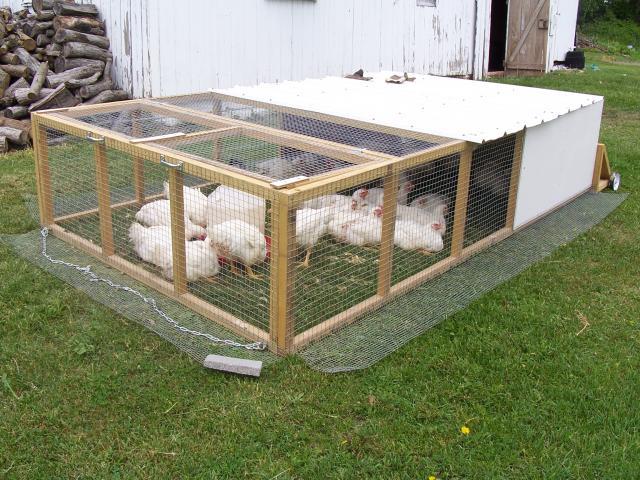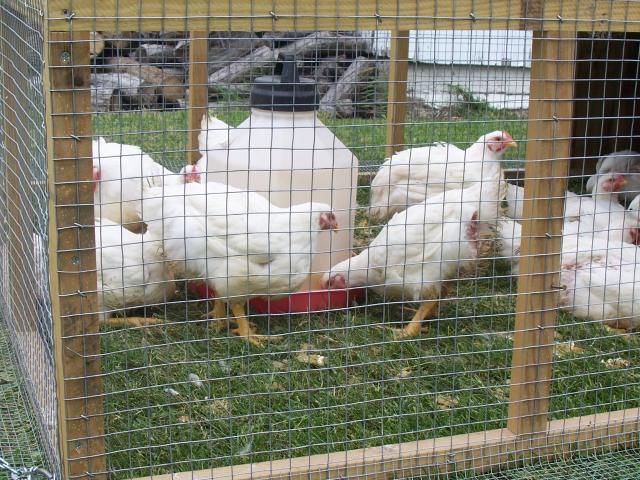Quote:
Jeff,
Now I'm not calling you out or anything like that, I'm just collecting information about something that I don't yet have an opinion on. But...
These are the types of numbers that I see in posts that confuse me. 8x16 tractor (128 square feet right?) With your minimum range of birds you are less that 2 sq. feet right off the bat. At your max you're at only 1.28 sq feet per bird, yet you say 2-3 sq feet is good. Again, I'm not trying to say anything about how you do it, I'm just trying to get a real-world grasp on what works. If that works, great! That's exactly the kind of stuff I'm looking for.
I am all for maximizing production with minimized space, and frankly I won't be able to move a tractor 2 to 3 times a day. What I don't want is a tractor so full that the birds are soiling each other as much as the ground. With the footprint of one of those birds being 1sq foot or more just standing around, I find it hard to think that 1.5 sq feet per bird up until harvesting is enough. Granted I know I can do it however I want to, and ultimately I will, but again, I'm just asking all the BYCers that tractor their CXs to speak up and list their densities.
It's all good... however I move my tractors minimum three times a day which is why I'm able to do so many... also I process mine when they hit 5 pounds live weight. Most people shoot for dressed weights that big. These work for me because I work on the farm 24/7 and I'm able to do it. However realistically it's not possible to move the pens once a day... for most people... which is why I said 2-3 square feet is best. Like BigRed said... the more birds the faster they grow. It's a commercial concept but on pasture. However there is plenty of room, it's not like they are on top of each other. I need to take some pics today and I can take a pic of the two tractors that I have with 85 birds in them at full grown. We will be processing them on Friday.
Jeff,
Now I'm not calling you out or anything like that, I'm just collecting information about something that I don't yet have an opinion on. But...
These are the types of numbers that I see in posts that confuse me. 8x16 tractor (128 square feet right?) With your minimum range of birds you are less that 2 sq. feet right off the bat. At your max you're at only 1.28 sq feet per bird, yet you say 2-3 sq feet is good. Again, I'm not trying to say anything about how you do it, I'm just trying to get a real-world grasp on what works. If that works, great! That's exactly the kind of stuff I'm looking for.
I am all for maximizing production with minimized space, and frankly I won't be able to move a tractor 2 to 3 times a day. What I don't want is a tractor so full that the birds are soiling each other as much as the ground. With the footprint of one of those birds being 1sq foot or more just standing around, I find it hard to think that 1.5 sq feet per bird up until harvesting is enough. Granted I know I can do it however I want to, and ultimately I will, but again, I'm just asking all the BYCers that tractor their CXs to speak up and list their densities.
It's all good... however I move my tractors minimum three times a day which is why I'm able to do so many... also I process mine when they hit 5 pounds live weight. Most people shoot for dressed weights that big. These work for me because I work on the farm 24/7 and I'm able to do it. However realistically it's not possible to move the pens once a day... for most people... which is why I said 2-3 square feet is best. Like BigRed said... the more birds the faster they grow. It's a commercial concept but on pasture. However there is plenty of room, it's not like they are on top of each other. I need to take some pics today and I can take a pic of the two tractors that I have with 85 birds in them at full grown. We will be processing them on Friday.



